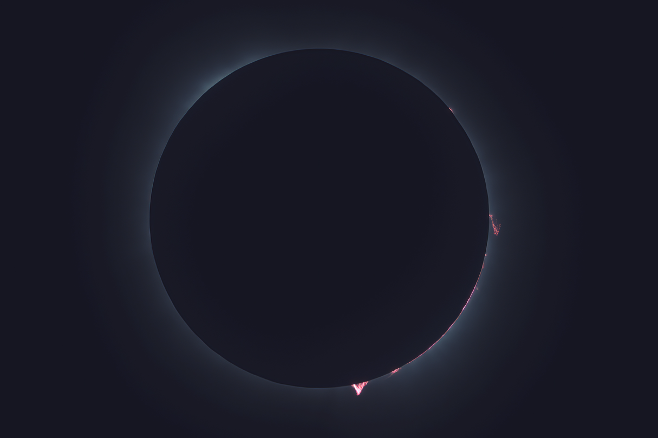
by Rex Parker, PhD director@princetonastronomers.org
May 14 Meeting of AAAP. Our meeting in Peyton Hall, Princeton University will be the last regular meeting on campus until Sept. For the June 11 meeting we’ll convene at the State Planetarium in Trenton, then break till Sept. These meetings in person + Zoom are opportunities not only to learn about the science and practice of astronomy, but also to figure out what the AAAP is all about, and meet fellow amateur astronomers. Our meetings are also open to the public and we urge you to invite friends and family, young or adult. Starting last week we began the seasonal Friday night observing sessions at our observatory in Washington Crossing State Park, which are held whenever it’s ~halfway clear from April-October. The Observatory features some very fine telescopes on precise computer-controlled Paramounts. We do a lot of astro-video with special cameras on the scopes as well as direct eyepiece observing to show others the celestial wonders.
Election of Officers May 14. It is important that members attend the May 14 meeting to help achieve a quorum for the annual election of officers. I would like to thank Mike DiMario (chair) and Debbie Mayes for agreeing to serve as the nominating committee. If you are interested in holding a Board position, please contact nominations@princetonastronomy.org. According to the Constitution and By-laws, the Nominating Committee will identify a slate of candidates for the 7 Board positions of director, assistant director, secretary, treasurer, program chair, observatory chair, and outreach chair. “Officers shall be elected at the Annual Meeting of AAAP in May. Subject to the quorum requirement of Section 5, Subsection C, a simple majority of votes cast shall be sufficient for election. Newly elected officers shall assume office at the end of the Annual Meeting.”
A Transformation Right in Front of Our Eyes. We’re living in remarkable times, with both the cosmically vast and the earthly infinitesimal within sight of human eyes. Today’s technical advances may elicit similar musings as felt by the intelligentsia of the late 1600’s, witnessing Galileo’s newly invented telescope and Leeuwenhoek and Hooke’s first microscopes. By our standards today those optical devices were simple and limited in performance, but the degree of effort and study on the part of their inventors and practitioners were immense. The excitement and sense of achievement they felt was likely in direct proportion to the degree of overcoming difficult challenges. The annals of the Royal Society, the world’s oldest continually existing scientific institution dating back to 1660, describe members gathering for days on end to examine the secret natural world revealed by Hooke’s microscope. Galileo’s refractor telescope and later Newton’s reflector, a century after Copernicus shook astronomy loose from theology, excited observers but also elicited unwelcome musings about the triviality of humans in the cosmic order. There was plenty of opposition to the idea of using a telescope to observe the heavens, probably more so than using a microscope to understand biology. In an oddly similar way, the latest “smart” technology can leave us floating adrift, with achievements once held in esteem now merely ordinary, or less. New technology can make the hard-earned results of previous intellectual endeavor and discipline seem insignificant. This may be happening to some amateur astronomers who formerly applied themselves to learn, navigate, and observe the celestial sphere. The sinking feeling is only amplified by images from the amazing orbiting James Webb telescope, which even more than Hubble before, blow away the images we amateurs produce with our surface-bound little scopes. Further disconnecting effort and skill is the recent rise of the Smart Telescope, fully automated and portable, exemplified by the ZWO Seestar, the Dwarflab Dwarf II, or the Vaonis Vespera. These small devices, for example with 50mm aperture and focal length 250mm, are able to take astrophotographs with the push of a button even in our light polluted skies (and they don’t even look like telescopes). The Smart Telescope asks for almost no user skill, little actual human input, and indeed no prior knowledge of astronomy. There are limitations at present, chiefly wide field/low magnification optics, but nonetheless there is an impact of these new smart instruments on the field of astrophotography and on the minds of amateur astronomers.
What would Robert Hooke, Christopher Wren, Isaac Newton, and their Royal Society colleagues have said about the direction this is heading? Is the loss of physical and mental exertion, of minimizing depth of study and scientific understanding, in order to achieve easy fast results really in our best interests? Is it the destination or the path that matters more to us? Yes, this is a philosophy question, and for amateur astronomers, pertinent to the future development and market for instruments that enable our hobby and passion. Certainly, many people are favorably impressed with the emergence of Smart Telescopes. It is apparent that this approach can appeal to young people and could have a place in schools and in outreach. Should we acquire one for the AAAP’s telescope collection? No doubt there are differing opinions about this among members. I would be keen to hear yours, in a future issue of Sidereal Times or in discussions at AAAP meetings.












































